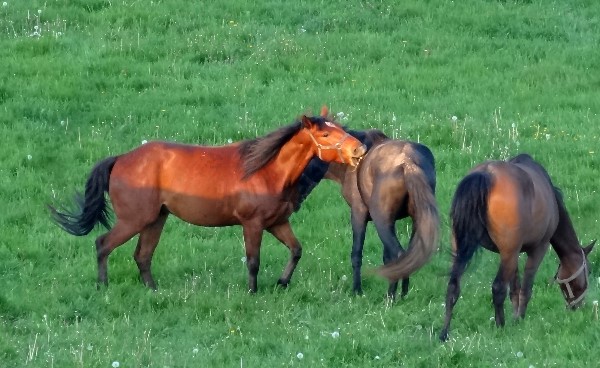The goal of that post is not to go through all the measurement process, neither to deal with the good headstall or bit. I have just seen such strange _ and sometimes painful _ methods to bridle a horse that I feel interesting to share this information. I did not invent anything here: many good horsemen use the following method, I experienced it and I think it is the most comfortable both for the horse and the horseman or horsewoman.
2013
How to bridle your horse? / video
How to prepare a horse to bridle? / video
Well, there are two options here: first classic answer is “you don’t, you put your hand in the mouth and it’s gonna open it, period!” The second option is slightly different and consists in teaching different steps to your horse to make him want the bit and the bridle: lower the head, tip it inside, open the mouth, take the bit and let the horseman or horsewoman put the headstall on.
Why is physical punishment to a horse never acceptable? / quote
7 Clinics, Betty Staley
Betty Staley talks about punishment very well in this series of DVDs and I can not help but convey her words of wisdom. Punishment, such as hitting the horse with your hand, your whip or your spurs, is just a completely useless act. Ultimately, such behavior can put you at risk and you obtain a result that is opposite to what you look for.
We should always keep in mind that horses have a very strong sense of self-preservation which, combined to a remarkable memory, will teach them very quickly to be afraid of humans if approached and worked with this punishment method.
For those who took some time to think about life, about their relationship with other beings (human or animal), they will probably not need to be convinced. For the others, as life does not always leave us the opportunity to think about real, deep and essential questions, some more practical arguments should be enough to convince them:
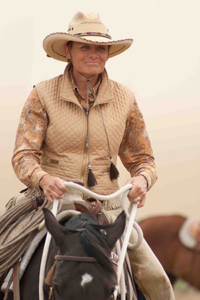
Exercises: Groundwork – Lungeing / video
Lungeing is the third exercise that I qualify as fundamental to the horse’s education. It sounds reasonable to think that if you are not capable to ask your horse to move forward, to walk, to trot and canter around you from the ground, there is no reason that it will listen to you once you are on the saddle. That is a great exercise to perform with horses that refuse to trot or canter for instance, or with horses that are used to buck when asked to lope.
Remain in control of your horse
To be a good leader, a horse ought to remain in control of the situation all the time. In most mammal gatherings, old leaders lose their status the...
Continue Reading →Exercises: Groundwork – Backing Up / video
Backing up a horse is the second fundamental to build a strong and mutual respect. You do not run over your horse and he should not run over you: especially because he weights more than four times your weight! This exercise is designed to teach horses the notion of our personal space.
DVDs: Downunder Horsemanship by Clinton Anderson / quote
His horsemanship is based on the knowledge he acquired in Australia. Later, he visited the United States where he learnt from Ray Hunt some basic principles:
“Make the wrong thing difficult, the right thing easy.Do as easy as possible, as firm as necessary.
Downunder Horsemanship by Clinton Anderson
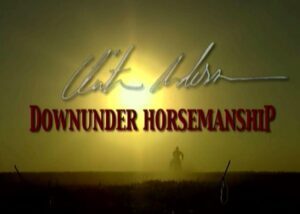
Exercises: Groundwork – Desensitizing to the flag / video
Desensitizing a horse to the flag, to the rope or to the hand is a basic exercise that would actually considerably reduce the number of injuries caused by horses suddenly fleeing because of a plastic bag, a car, wind in branches, etc. The first objective is security.
Books: On Horsemanship by Xenophon / quote
It is quite interesting to observe that most of the major principles on which modern Natural Horsemanship is based were already well known more than two thousand years ago in Greece and around the Mediterranean Sea. Indeed, the philosopher Xenophon clearly deals with the following concepts:
- Desensitizing;
- Gentleness and patience;
- Timing and harmony with horses;
- Diversity in training;
- Making the wrong thing difficult and the right thing easy;
- Getting the soft feel and avoiding riding gimmicks;
- Rewarding the slightest try.
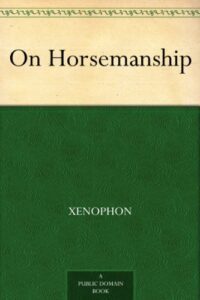
Horses minds are jigsaw puzzles / quote


This is our responsibility to make sure that we did not tear or lose a piece of the puzzle.
Wild horses have left European plains and 99.9% of our horses have been bred in farms, handled as weanlings, started between their second to fourth birthdays, and sold to private owners, professional stables or riding schools.
Continue Reading →
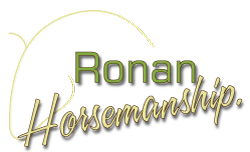
 ENGLISH
ENGLISH DEUTSCH
DEUTSCH ESPAÑOL
ESPAÑOL FRANÇAIS
FRANÇAIS